Support Village Voice News With a Donation of Your Choice.
…but many Guyanese find facility a place for driving lessons; exercise ’residents’ hope politics will not determine their fate
By Lisa Hamilton
About a billion dollars was spent on the D’Urban Park Development Project and now, the area that once was the go-to location for major celebrations is now suitable only for driving lessons and exercising, if one does not mind the rotting structure, overgrown bushes and homeless men and women that have taken up residence.

The Village Voice News recently paid a visit to the facility that saw its last large scale gathering in February 2020 when the APNU+AFC held its closing rally leading up to the 2020 General and Regional Elections. More than one year later, the Golden Arrowhead that flew high above is missing—maybe better so, though the gigantic flagpole remains in place. Entering the location, a homeless man was seen utilising the water system connected to the restroom facilities at the main stage to rinse a bucket of clothes.
At the centre of the Park, several cars snailed around in circles as learner drivers sought to prove that they have what it takes to man the road alone. A man was seen jogging but, almost impossible to ignore, were the hammocks and cardboard sheets at the top of the stands where several homeless persons lay, hiding away from the afternoon sun.
HOME, FOR NOW
Inquisitive, the Village Voice News peered closer and, one by one, the homeless men got to talking. No sooner was it realised that there were two major issues at hand. While the uncertainty of the D’Urban Park area was definitely one of them, that issue was providing a temporary solution to another issue — homelessness.
“From the day hay suh started to build they said they only wasting tax monies and these things. They say out here is ‘White Elephant’ and all kinda thing. Well, we don’t look at it suh,” said Gary Morris, a homeless amputee who had lost his left leg to a fire in his teens.
“I don’t really work nowhere proppa yet because I get the one leg, they don’t really be no jobs for people with one leg and these things. It’s nothing like in the States and those places,” he added.
Morris said that it is difficult living at the location because even friends can become enemies at nights when one is asleep with something — anything — valuable in their possession. He said he noticed that though the structure he occupies is rundown, many people come out in the afternoon to play games or exercise at the location.
CONSTRUCTED IN CONTROVERSY

The construction of the area was done under the APNU+AFC government and under much controversy. While it was presented, initially, to be necessary for the hosting of activities for Guyana’s 50th Independence Anniversary celebrations in 2016 and later set to evolve into a ‘Green Zone Recreational Park’, the People’s Progressive Party/Civic (PPP/C) — then Opposition — questioned the large amount of finances being injected into it and its feasibility.
There were also issues with the fact that work on the project did not coincide with the time in which Homestretch Development Incorporated (HDI) — the Company with responsibility for the project — was established. According to former President David Granger in 2016, HDI was established solely to facilitate completion of the D’Urban Park Development Project and to expedite it in time for the Independence Anniversary. “It was just one year, but we have now in Guyana, the single biggest stadium… and it is a public asset, which will be there for all time. So we have a very important institution that is open to all Guyanese. You can have your Diwali, you can have Christian crusades, you can have Hindu and Muslim services there, but we have a valuable asset that we did not have before,” he said that year.
However, regarding the project, there were also many questions about the financial transparency of HDI. Financial irregularities were suspected and, in 2017, the Audit Office of Guyana launched a probe into the financing of the project. “From September 2015 to January 22, 2016, there was no account of what monies were collected, who collected these and who authorised the collection, nor how these were spent. Government had promised to account for the donations received, but this was not done,” current Minister of Public Works, Juan Edghill had stated while in Opposition in 2017. There were also concerns raised by the media and then Opposition about the use of Lotto Funds on the project; that former Public Service Minister, Dr. Rupert Roopnaraine sat as a Director of HDI; the involvement of businessman Larry London and more.
ROTTING AWAY
Since 2020, when the PPP/C took office, the D’Urban Park has not been utilised for any national event– not that such would be recommended during the global health crisis. It may be better to highlight that the area has not been maintained. There are plants growing through the stands as the millions spent rot away just as fast as the wooden structure.
There is garbage all about, light flooding when the rain falls and a faint stench if one goes too close to the stands. The windows at the main pavilion are broken but security guards are present, watching over the activities of Guyanese who have decided that the open space, at least, could be useful to them. The homeless men who have a view of it all — the contrast of deterioration and usefulness — said the politics evidently involved does not matter to them. They told Village Voice News that they are aware of Guyana’s political division but that does not help their plight of homelessness.

They said that they have heard rumours that the structure could be demolished but, for now, it is a form of a ‘night shelter’ for them after their own challenges experienced with the formal state-run Night Shelter set up for persons like themselves. They hope that, as the fate of the D’Urban Park Development Project is decided, that they will not simply be brushed aside without support to their specific issues. Several of the homeless men at the location have been involved in some crime prior, whether petty or fairly serious.
It now hinders their ability to acquire jobs apart from work in the interior and minor chores here and there given by the downtown Georgetown businesses. The majority also had access to facemasks and were wearing them while chatting which suggested that they were well aware of the ongoing pandemic. They requested to be tested and to receive health care just like other Guyanese as the Night Shelter had proven to be more of a challenge than a solution.
“Other countries have shelter while the people that are running the shelter [locally] they need to change the staff because if we don’t have money to give them we can’t stay there, that’s the Night Shelter,” a 55-year-old man claimed.
“You got people that deh there for years that play as if they own the shelter, that’s bad. Now they say you have to get COVID-19 test, you got to get AIDS test and TB test to go in there and that’s fine but what I’m saying is that a shelter is for you to go and sleep and come out back but people are living there.”
WE WANT SOLUTIONS TOO
Another homeless man, Isaac Bryan, who has been living at the location for some two years now since his sister left for overseas said he tried visiting the shelter last December but got drunk one night and was kicked out. He goes to various Muslim organisations and the Salvation Army for food and clothes. “I would like for them to let me back into the shelter so I can get to come in and out and go about me business and help me with dinner and breakfast,” the 51-year-old man said.

Others had mental issues, such as 65-year-old Roy Taylor who said that he was the General Manager at Rentokil Guyana Limited for 27 years up until he started experiencing challenges. “I don’t know what happened to my head but something is wrong with me,” he said. “Living here is a problem because anybody do anything. You got to always deh pon the alert. You come and they pick up anything, they gone with it. You know how much things I had here? All my clothes, all I got is what I got on,” he added.
Another homeless man, Adolphus Shepherd, the one spotted washing clothes earlier on, returned. He told the newspaper that he washes for the elderly homeless persons at the location and does his best to protect them at night. He said that he is a former nurse and deportee from the United States who has had countless run-ins with the law. He said that he was charged with trafficking, promoting prostitution and more but he saw these avenues as “quick money”. The 54-year-old man also admitted that he, like some others, had used drugs which ultimately reduce his quality of life.

“It is a place for not only the homeless but a place we can come and cool out,” he said, motioning to his surroundings. “This is home! We live in unity, it is like home. You have some invaders but once we live with unity, it’s love. Like these big men, I go and wash their clothes, they’re elders.”
To the security employed by the Ministry of Culture, Youth and Sport at the location, who primarily occupy the green pavilion, the homeless men can pose a challenge regarding their behaviour. Efforts by the Village Voice News to reach the Ministry to determine the plans for the area proved unsuccessful, though there are talks about a planned cleanup activity for the coming week and the return of electricity to the location.
















